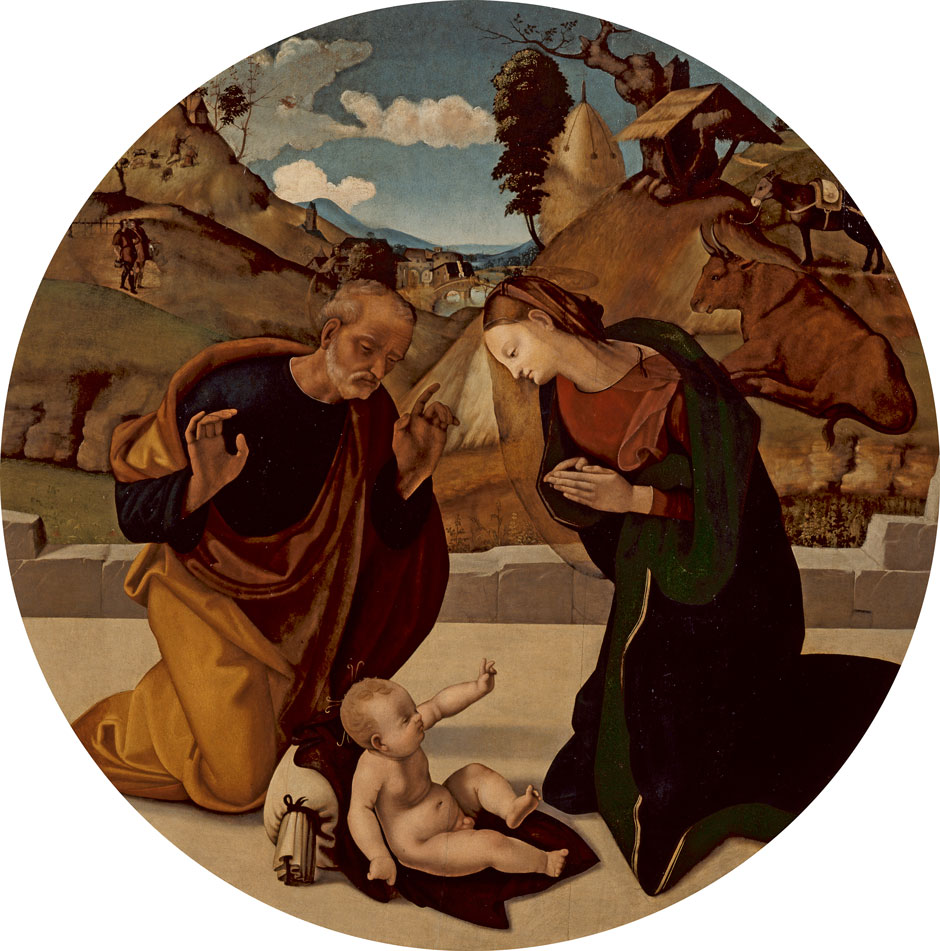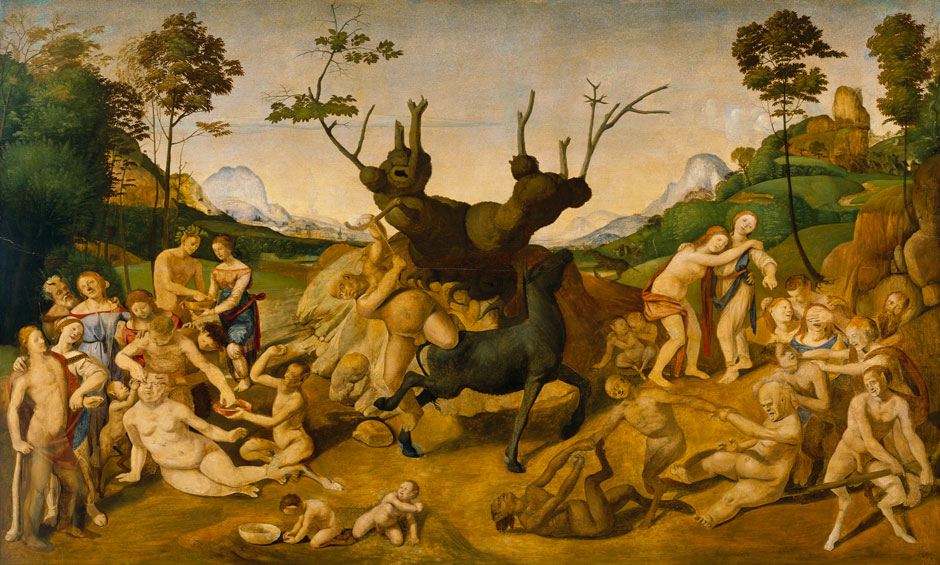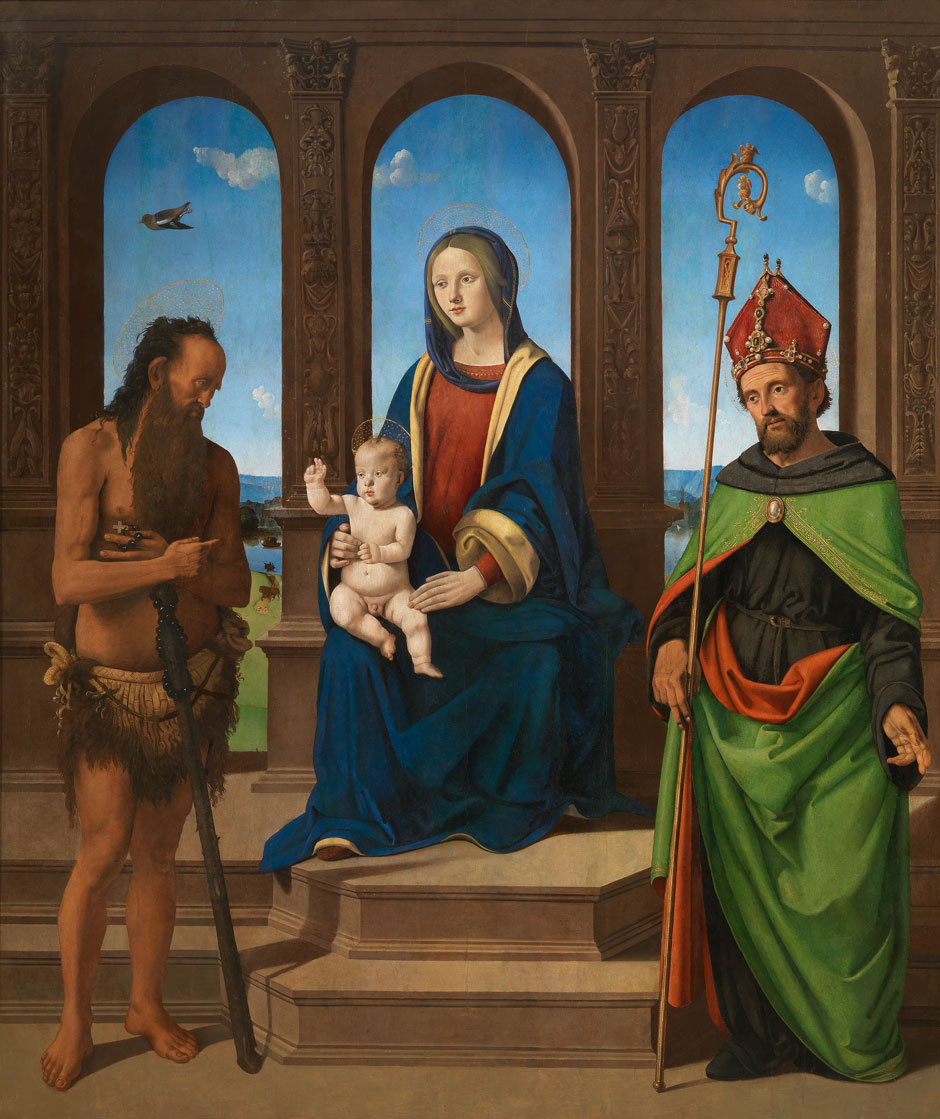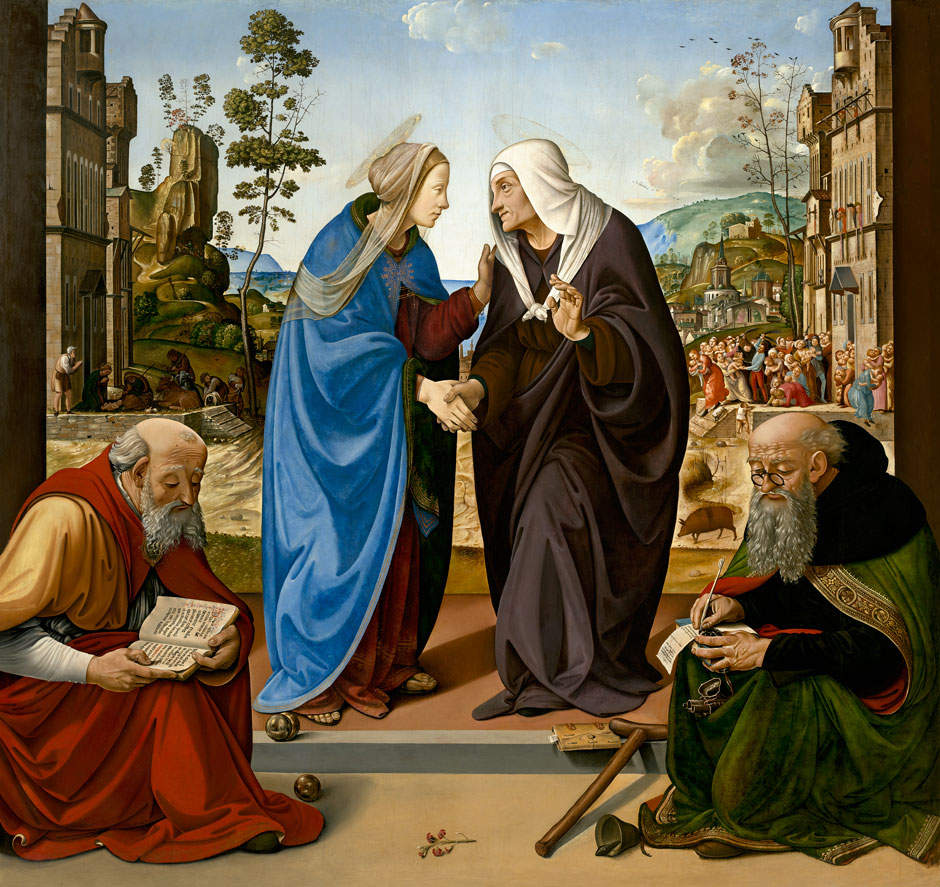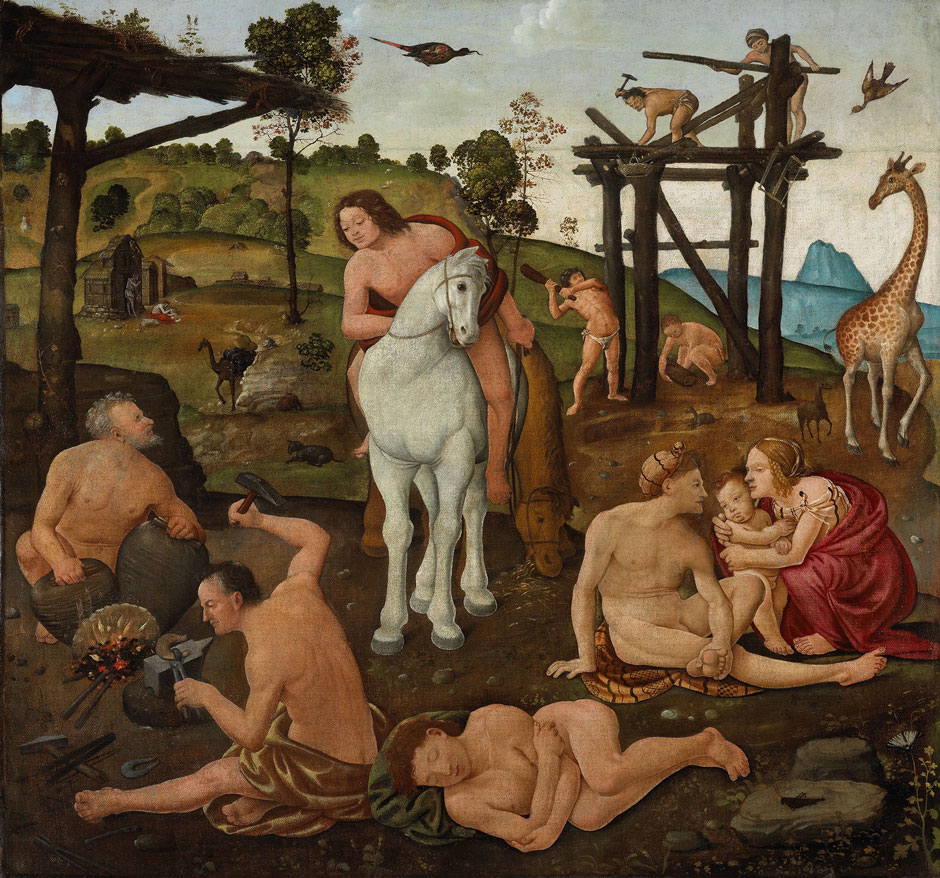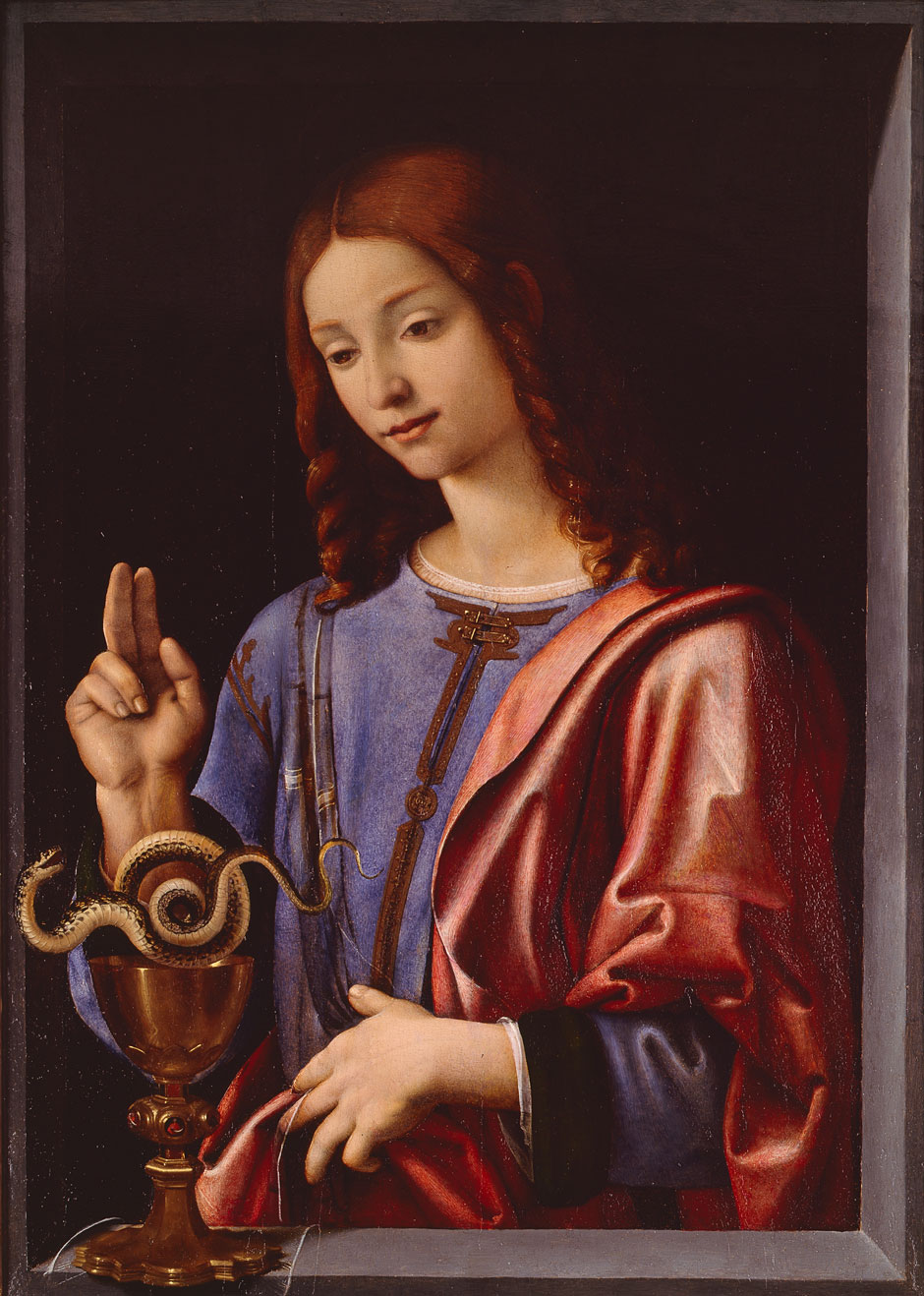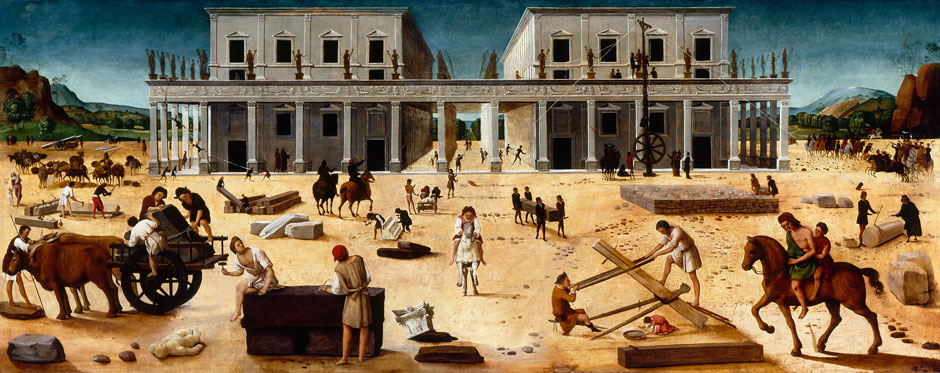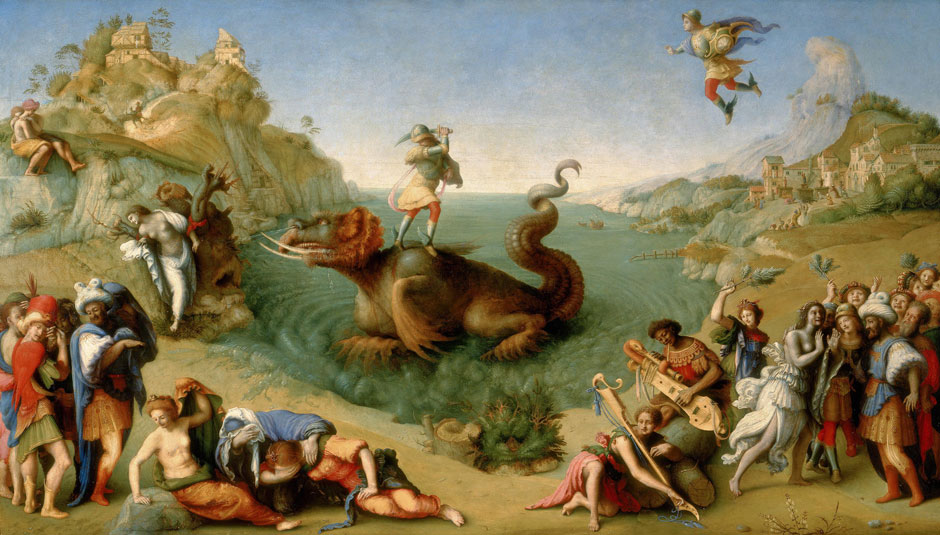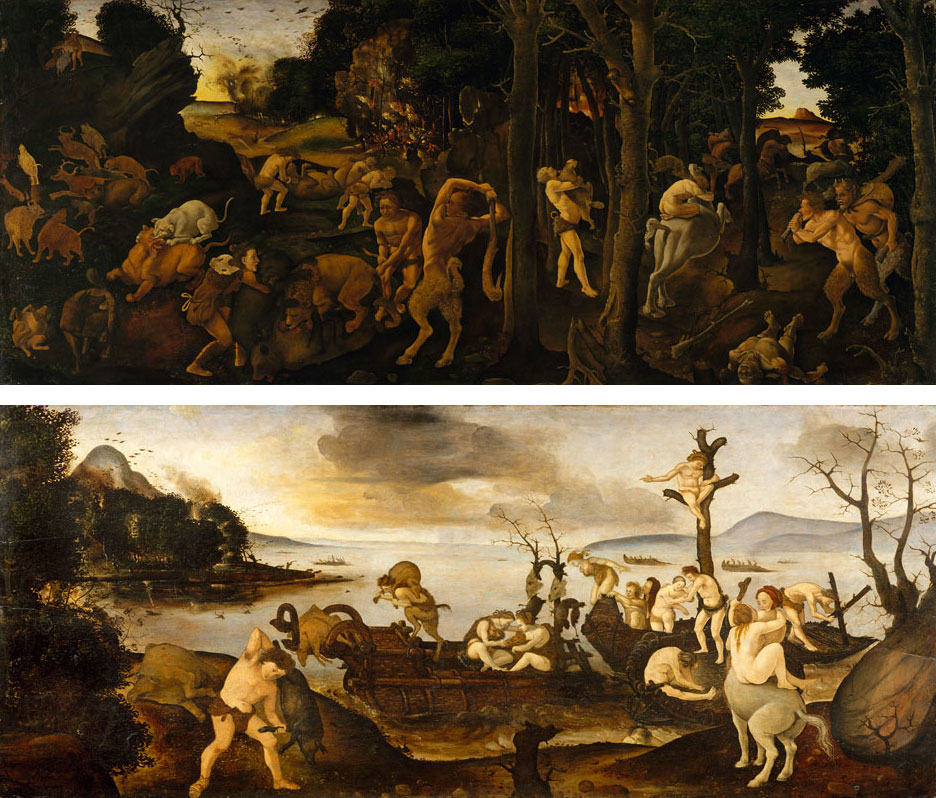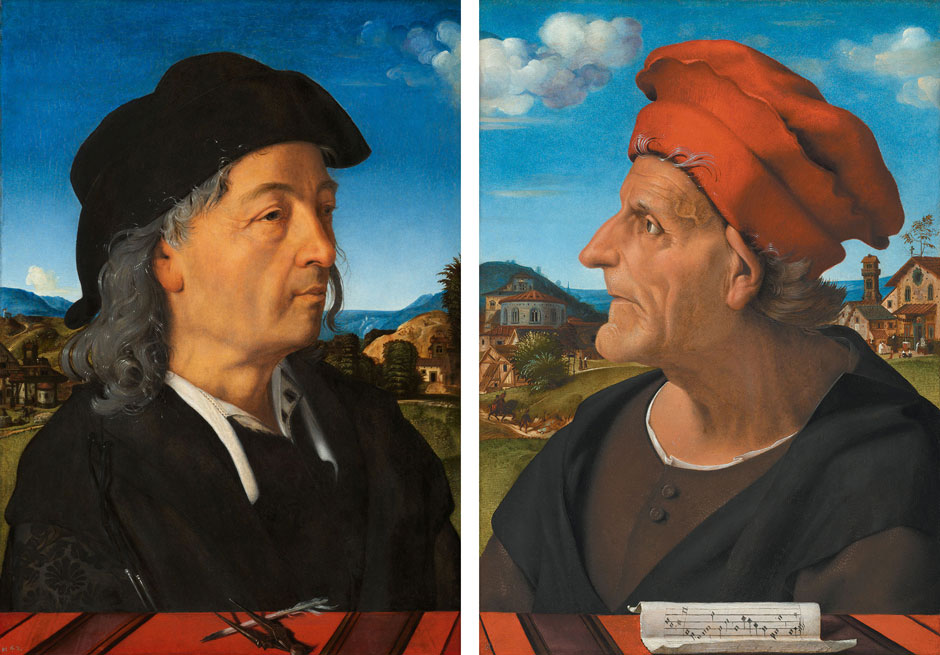“Like Botticelli, Piero di Cosimo worked in many different fields of art,” Anthony Grafton writes in the New York Review’s May 7 issue. Though overlooked by many of the nineteenth century’s great critics, he produced some of the most handsome and dignified religious paintings of the late fifteenth and early sixteenth centuries, and he also crafted “startlingly vivid portraits of individuals and strangely evocative images of religious objects.”
We present below a series of these works, with commentary drawn from Grafton’s review.
—The Editors
Piero’s works of sacred art, whether aimed at public display or composed as a background for private prayer and meditation, are stately. The Virgin Mary dominates, looking like a demure young Florentine woman.
The mythologies are cast in a very different key. Here everything is motion, action, energy. This Bacchic procession to find honey ends in wild comedy as Bacchus’s sidekick Silenus is stung by bees.
The longer one inspects these marvelous paintings—and the more one surveys their background detail—the more surprises they offer. Why, one wonders, does a bird fly distractingly past the leftmost arch in Piero’s monumental Madonna and Child with Saints Onuphrius and Augustine?
In most cases, the gravity of the holy figures in the foreground is accentuated by the lively detail of street scenes and façades behind them. But sometimes—as with the massacre of the Holy Innocents by Herod that unfolds in turmoil far behind the Virgin and Elizabeth—the relation between foreground and background seems simply puzzling.
Though he learned an enormous amount from northern painters like Hugo van der Goes, Piero was far too original simply to borrow from others. He gave himself the same tests, again and again, though he did not always pass them: for example, depicting feet, which he did in an elegantly detailed manner, down to their splayed toes…
…and depicting hands, which he did rather awkwardly.
He loved setting himself exercises in foreshortening. Often—as in the horse and rider coming directly at the onlooker in this panel—Piero pulled off this effect with bravura.
Here Piero incorporates a number of details from Ovid’s account of the myth of Perseus and Andromeda in the Metamorphoses. Ovid tells us that Andromeda looked to Perseus like a marble statue. Piero’s Andromeda, bound to a tree for the monster and nude from the waist up, is pale enough to be a sculptor’s work. Ovid describes Perseus’s sword as curved: Piero’s Perseus hacks away with a scimitar.
Two of the most striking of Piero’s panels, now in the Metropolitan Museum, depict what must be the earliest stage of human civilization. In one of them, humans, satyrs, and centaurs cooperate to hunt down and kill animals that a fire has flushed from their hiding places in the forest.
In the other, similarly varied hunters join human women on a shoreline from which the fire is still visible. The presence of crude ships—and the fact that two women, clad in skins, cooperate in nursing a pup of some sort—reveal that at least some of these creatures (it’s not clear which) have developed emotional lives and created some technical devices.
Piero’s early double portrait of the architect Giuliano da Sangallo and his father, the musician Francesco Giamberti, is particularly stunning. Both men appear with the implements of their arts, Giuliano with a compass and Francesco with a sheet of music. This is the earliest Renaissance portrait to identify its subjects’ callings. It’s reasonable to imagine that the proud young artist who produced this marvelous celebration of two artists, father and son, might have spent much of his life developing the thoughts that they only suggest: that men make their own arts, if not their own fates.
Advertisement
“Piero di Cosimo: The Poetry of Painting in Renaissance Florence” will be on view at the Galleria degli Uffizi from June 23 through September 27.

